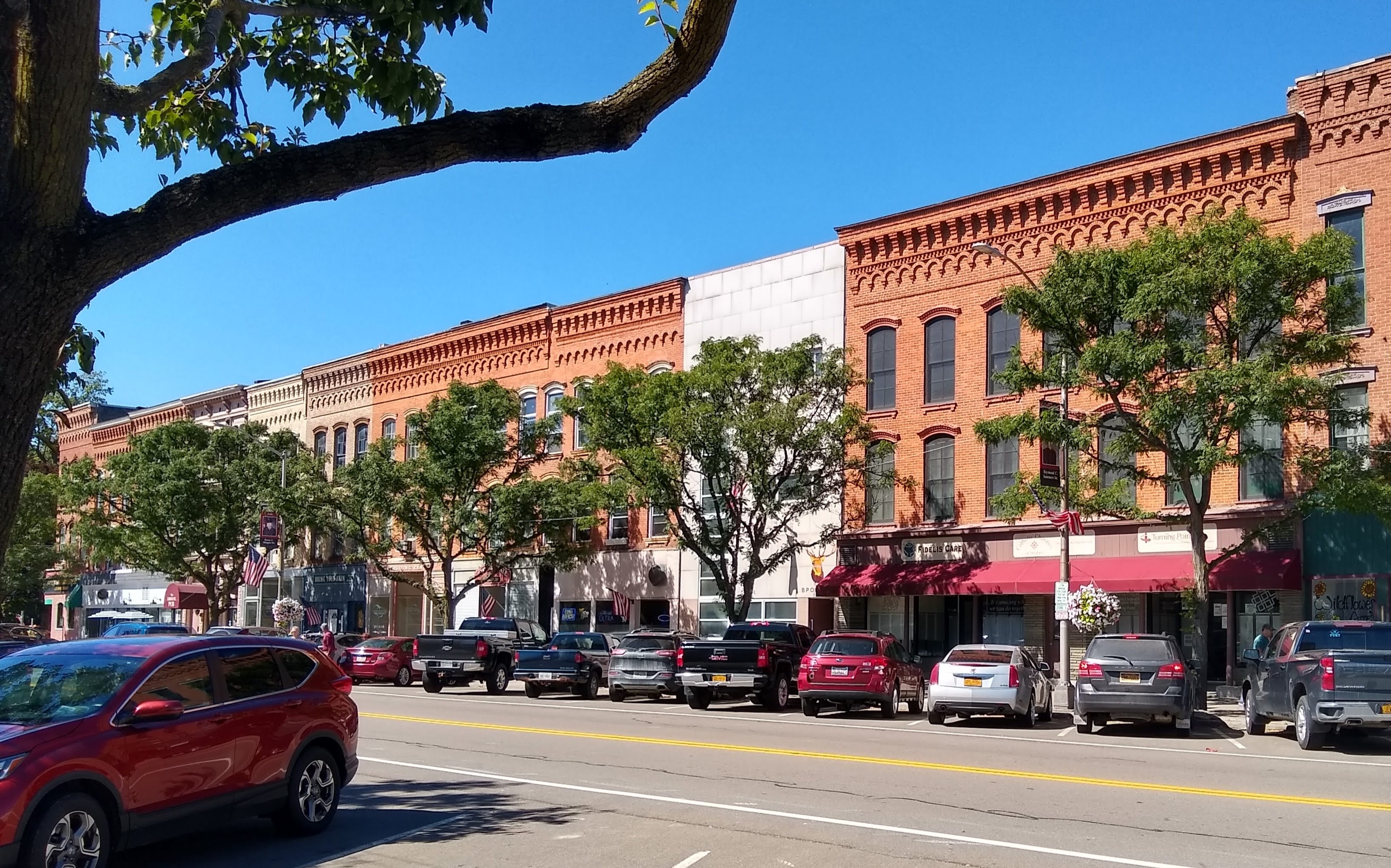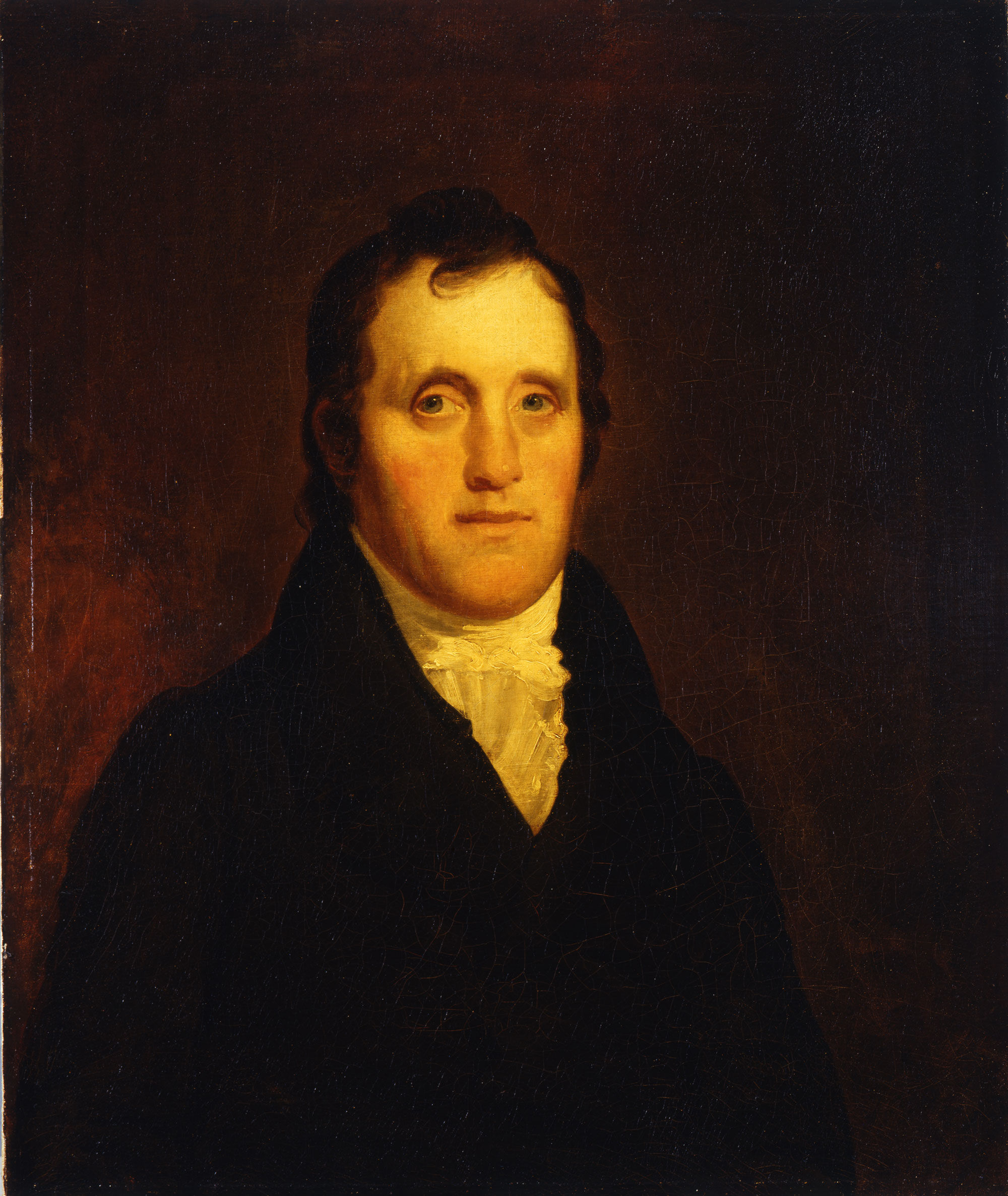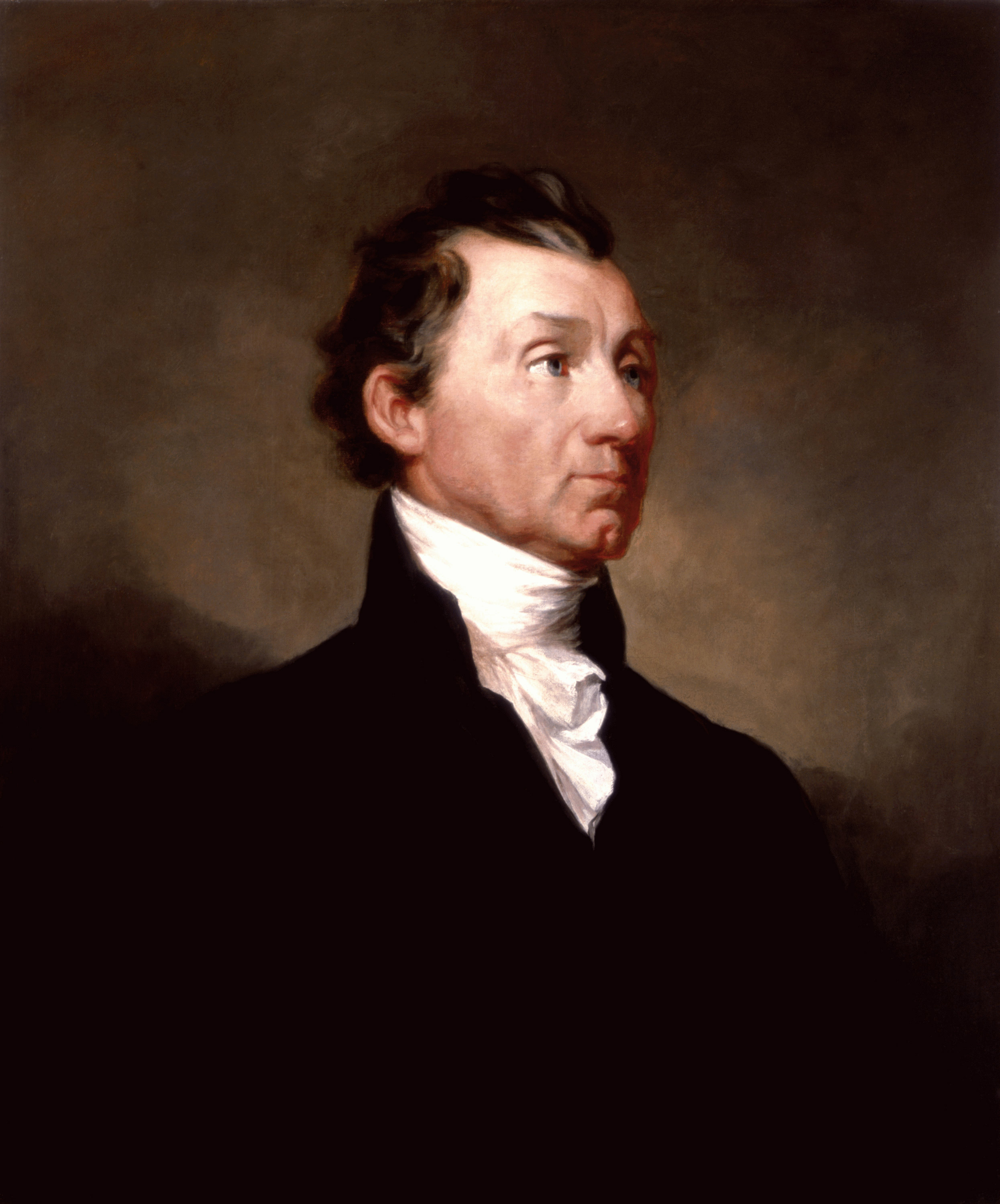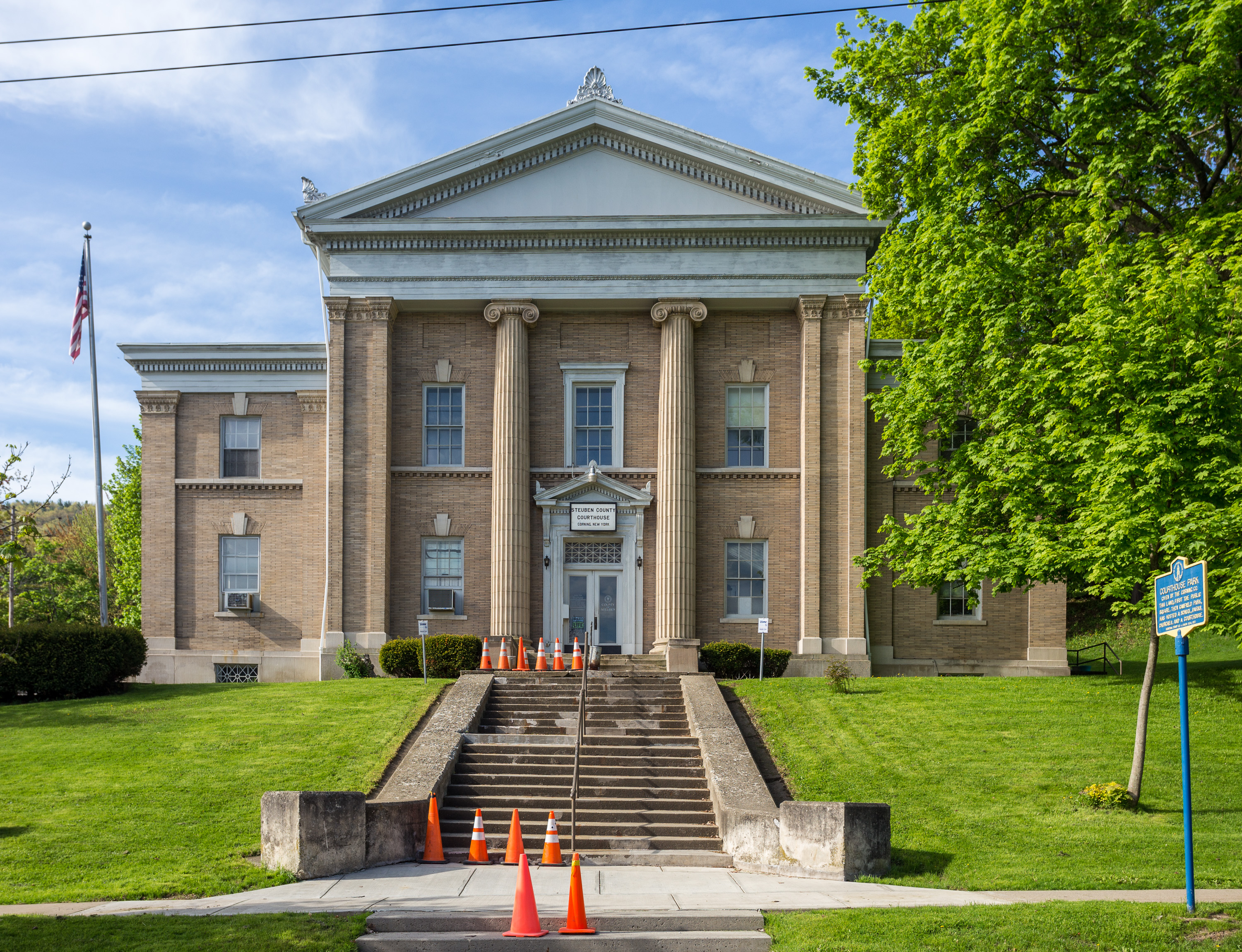|
William B. Rochester
William Beatty Rochester (January 29, 1789 Hagerstown, Maryland – June 14, 1838) was an American lawyer and politician from New York. Early life Rochester was the first child of Col. Nathaniel Rochester (1752–1831), founder of the City of Rochester, New York, and Sophia ( née Beatty) Rochester (1768–1845). Mayor Thomas H. Rochester was his brother. He attended the public schools and graduated from Charlotte Hall Military Academy. Career During the War of 1812, Rochester was an aide-de-camp to Gen. George McClure. After the war, he studied law with his uncle Judge Adam Beatty and with Henry Clay, was admitted to the bar, and began practice in Bath, New York. Later, he removed to Angelica, New York. Rochester was a member of the New York State Assembly ( Allegany and Steuben Co.) in 1816-17 and 1818. Rochester was a presidential elector in 1820, voting for James Monroe and Daniel D. Tompkins. Rochester was elected as a Democratic-Republican to the 17th, and re-e ... [...More Info...] [...Related Items...] OR: [Wikipedia] [Google] [Baidu] |
New York (state)
New York, officially the State of New York, is a state in the Northeastern United States. It is often called New York State to distinguish it from its largest city, New York City. With a total area of , New York is the 27th-largest U.S. state by area. With 20.2 million people, it is the fourth-most-populous state in the United States as of 2021, with approximately 44% living in New York City, including 25% of the state's population within Brooklyn and Queens, and another 15% on the remainder of Long Island, the most populous island in the United States. The state is bordered by New Jersey and Pennsylvania to the south, and Connecticut, Massachusetts, and Vermont to the east; it has a maritime border with Rhode Island, east of Long Island, as well as an international border with the Canadian provinces of Quebec to the north and Ontario to the northwest. New York City (NYC) is the most populous city in the United States, and around two-thirds of the state's popul ... [...More Info...] [...Related Items...] OR: [Wikipedia] [Google] [Baidu] |
Bath (village), New York
Bath is a village in Steuben County, New York, United States. The population was 5,786 at the 2010 census. Bath is the county seat of Steuben County. The community was named either for the English city of Bath, Somerset, or for Lady Laura Pulteney, 1st Countess of Bath and daughter of Sir William Pulteney, one of the original landowners. The Village of Bath is in the Town of Bath and is northwest of Elmira and is west of Tyrone. Bath is the location of the Bath VA Medical Center (former old soldiers' home), Bath National Cemetery, and the Steuben County Fair, the oldest continuous fair in the United States. History The village was founded in 1793. The village was originally incorporated in 1816, but was not organized until 1836. In addition to the Bath VA Medical Center, the James H. Bolton House, Campbell-Rumsey House, Cobblestone House, Davenport Library, Erie Freighthouse Historic District, The First Baptist Society of Bath, Gansevoort/East Steuben Streets Histo ... [...More Info...] [...Related Items...] OR: [Wikipedia] [Google] [Baidu] |
New York State Circuit Courts
The New York circuit courts were circuit courts created by the New York State Constitution of 1821, and abolished by the Constitution of 1846. History Under the provisions of the Constitution of New York, 1777, the justices of the New York Supreme Court had been holding traveling circuit courts. Under the Constitution of 1821, the state was divided in eight senatorial districts, so known because each district elected four senators, which were also used as judicial divisions. The circuit courts were organized by an act passed April 17, 1823. Laws of 1822c. 182, p. 208/ref> The circuit court judges were appointed by the Governor and confirmed by the State Senate. The circuit courts ceased to exist on July 5, 1847, when the jurisdiction was taken over by the district benches of the New York Supreme Court the justices of which had been elected at the special judicial election in May 1847. List of judges First Circuit *1823–1841 Ogden Edwards *1841–1845 William Kent *1845–1847 ... [...More Info...] [...Related Items...] OR: [Wikipedia] [Google] [Baidu] |
18th United States Congress
The 18th United States Congress was a meeting of the legislative branch of the United States federal government, consisting of the United States Senate and the United States House of Representatives. It met in Washington, D.C. from March 4, 1823, to March 4, 1825, during the seventh and eighth years of James Monroe's presidency. The apportionment of seats in the House of Representatives was based on the Fourth Census of the United States in 1820. Both chambers had a Democratic-Republican majority. Major events * August 1823: Arikara War fought between the Arikara nation and the United States, the first American military conflict with the Plains Indians. * December 2, 1823: Monroe Doctrine: President James Monroe delivered a speech to the Congress, announcing a new policy of forbidding European interference in the Americas and establishing American neutrality in future European conflicts. * February 9, 1825: John Quincy Adams elected as President of the United States by the Ho ... [...More Info...] [...Related Items...] OR: [Wikipedia] [Google] [Baidu] |
17th United States Congress
The 17th United States Congress was a meeting of the legislative branch of the United States federal government, consisting of the United States Senate and the United States House of Representatives. While its term was officially March 4, 1821, to March 4, 1823, during the fifth and sixth years of James Monroe's presidency, its first session began on December 3, 1821, ending on May 8, 1822, and its second session began on December 2, 1822, to March 3, 1823. The apportionment of seats in the House of Representatives was based on the third Census of the United States in 1810. Both chambers had a Democratic-Republican majority. The members William Smith, John Gaillard, Joseph Gist, John Wilson, George McDuffie, Starling Tucker, James Overstreet, Thomas R. Mitchell, William Lowndes, Joel Roberts Poinsett, and James Blair were described as being "outspokenly pro-British" in their outlook. All of whom signed a "letter of brotherhood and solidarity" addressed to British Prime M ... [...More Info...] [...Related Items...] OR: [Wikipedia] [Google] [Baidu] |
Daniel D
Daniel is a masculine given name and a surname of Hebrew origin. It means "God is my judge"Hanks, Hardcastle and Hodges, ''Oxford Dictionary of First Names'', Oxford University Press, 2nd edition, , p. 68. (cf. Gabriel—"God is my strength"), and derives from two early biblical figures, primary among them Daniel from the Book of Daniel. It is a common given name for males, and is also used as a surname. It is also the basis for various derived given names and surnames. Background The name evolved into over 100 different spellings in countries around the world. Nicknames (Dan, Danny) are common in both English and Hebrew; "Dan" may also be a complete given name rather than a nickname. The name "Daniil" (Даниил) is common in Russia. Feminine versions (Danielle, Danièle, Daniela, Daniella, Dani, Danitza) are prevalent as well. It has been particularly well-used in Ireland. The Dutch names "Daan" and "Daniël" are also variations of Daniel. A related surname developed ... [...More Info...] [...Related Items...] OR: [Wikipedia] [Google] [Baidu] |
James Monroe
James Monroe ( ; April 28, 1758July 4, 1831) was an American statesman, lawyer, diplomat, and Founding Father who served as the fifth president of the United States from 1817 to 1825. A member of the Democratic-Republican Party, Monroe was the last president of the Virginia dynasty and the Republican Generation; his presidency coincided with the Era of Good Feelings, concluding the First Party System era of American politics. He is perhaps best known for issuing the Monroe Doctrine, a policy of opposing European colonialism in the Americas while effectively asserting U.S. dominance, empire, and hegemony in the hemisphere. He also served as governor of Virginia, a member of the United States Senate, U.S. ambassador to France and Britain, the seventh Secretary of State, and the eighth Secretary of War. Born into a slave-owning planter family in Westmoreland County, Virginia, Monroe served in the Continental Army during the American Revolutionary War. After studying law u ... [...More Info...] [...Related Items...] OR: [Wikipedia] [Google] [Baidu] |
1820 United States Presidential Election
The 1820 United States presidential election was the ninth quadrennial presidential election. It was held from Wednesday, November 1, to Wednesday, December 6, 1820. Taking place at the height of the Era of Good Feelings, the election saw incumbent Democratic-Republican President James Monroe win re-election without a major opponent. It was the third and the most recent United States presidential election in which a presidential candidate ran effectively unopposed. It was also the last election of a president from the revolutionary generation. As of 2022, this is the most recent presidential election where an incumbent president was re-elected who was neither a Democrat nor a Republican, before the Democratic-Republican party split into separate parties. Monroe and Vice President Daniel D. Tompkins faced no opposition from other Democratic-Republicans in their quest for a second term. The Federalist Party had fielded a presidential candidate in each election since 1796, but the pa ... [...More Info...] [...Related Items...] OR: [Wikipedia] [Google] [Baidu] |
Presidential Elector
The United States Electoral College is the group of presidential electors required by the Constitution to form every four years for the sole purpose of appointing the president and vice president. Each state and the District of Columbia appoints electors pursuant to the methods described by its legislature, equal in number to its congressional delegation (representatives and senators). Federal office holders, including senators and representatives, cannot be electors. Of the current 538 electors, an absolute majority of 270 or more ''electoral votes'' is required to elect the president and vice president. If no candidate achieves an absolute majority there, a contingent election is held by the United States House of Representatives to elect the president, and by the United States Senate to elect the vice president. The states and the District of Columbia hold a statewide or districtwide popular vote on Election Day in November to choose electors based upon how they have pled ... [...More Info...] [...Related Items...] OR: [Wikipedia] [Google] [Baidu] |
41st New York State Legislature
The 41st New York State Legislature, consisting of the New York State Senate and the New York State Assembly, met from January 27 to April 21, 1818, during the first year of DeWitt Clinton's governorship, in Albany. Background Under the provisions of the New York Constitution of 1777, amended by the Constitutional Convention of 1801, 32 Senators were elected on general tickets in the four senatorial districts for four-year terms. They were divided into four classes, and every year eight Senate seats came up for election. Assemblymen were elected countywide on general tickets to a one-year term, the whole Assembly being renewed annually. In 1797, Albany was declared the State capital, and all subsequent Legislatures have been meeting there ever since. In 1799, the Legislature enacted that future Legislatures meet on the last Tuesday of January of each year unless called earlier by the governor. On February 24, 1817, Gov. Tompkins resigned, to take office as U.S. Vice Presid ... [...More Info...] [...Related Items...] OR: [Wikipedia] [Google] [Baidu] |
40th New York State Legislature
The 40th New York State Legislature, consisting of the New York State Senate and the New York State Assembly, met from November 5, 1816, to April 15, 1817, during the tenth year of Daniel D. Tompkins's governorship, and while John Tayler was Acting Governor, in Albany. Background Under the provisions of the New York Constitution of 1777, amended by the Constitutional Convention of 1801, 32 Senators were elected on general tickets in the four senatorial districts for four-year terms. They were divided into four classes, and every year eight Senate seats came up for election. Assemblymen were elected countywide on general tickets to a one-year term, the whole Assembly being renewed annually. In 1797, Albany was declared the State capital, and all subsequent Legislatures have been meeting there ever since. In 1799, the Legislature enacted that future Legislatures meet on the last Tuesday of January of each year unless called earlier by the governor. On April 17, 1815, the Legisla ... [...More Info...] [...Related Items...] OR: [Wikipedia] [Google] [Baidu] |
Steuben County, New York
Steuben County (stu-BEN) is a county located in the U.S. state of New York. As of the 2020 census, the population was 93,584. Its county seat is Bath. Its name is in honor of Baron von Steuben, a Prussian general who fought on the American side in the American Revolutionary War, though it is not pronounced the same (). Steuben County comprises the Corning, NY Micropolitan Statistical Area, which is also included in the Elmira-Corning, NY Combined Statistical Area. History Ontario County was established in 1789 to govern lands the state of New York had acquired in the Phelps and Gorham Purchase; at the time it covered the entirety of Western New York. Steuben County, much larger than today, was split off from Ontario County on March 8, 1796. In 1823 a portion of Steuben County was combined with a portion of Ontario County to form Yates County. Steuben County was further reduced in size on April 17, 1854, when a portion was combined with portions of Chemung and Tomp ... [...More Info...] [...Related Items...] OR: [Wikipedia] [Google] [Baidu] |
.jpg)





